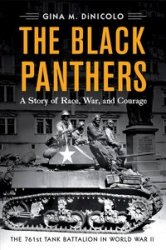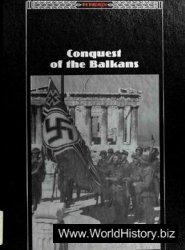Okinawa As American ships,
Planes, and troops leapfrogged toward Japan, the emperor's military leaders sought to hold onto gains made early in the war.
Fight for the Philippines, if the united states took back
The Philippines, Japan’s lifeline to oil in the East Indies would be choked off. By seizing island bases close to Japan, U. S. bombers could also bring devastation to industrial sites in Japan's home islands. From late 1944 into mid 1945, determined Japanese soldiers fought the most savage battles of the Pacific war, trying desperately to hold off the Americans.
General Douglas MacArthur had promised the Filipino people in 1942 that he would return, and on October 20, 1944, American troops landed on Leyte Island, keeping MacArthur's pledge. As the army poured ashore, the Japanese activated a plan to destroy the American fleet near Leyte. Three separate Japanese fleets converged on the Philippines, hoping to crush the ships supporting the American landings. U. S. submarines and carrier aircraft slowed, but did not stop, the Japanese center force on October 24, sinking the superbattleship Musashi. But the northern force of Japanese aircraft carriers lured Admiral William Halsey’s powerful U. S. carriers and battleships away from the Leyte beachhead. The Japanese plan was working.
Surprise at Leyte. Before dawn on the morning of October 25, the Japanese southern force steamed into a trap in Surigao Strait, south of Leyte. Six U. S. battleships, five of them raised from the mud of Pearl Harbor, rained down armor-piercing shells from their big guns. The outnumbered Japanese lost two battleships, a heavy cruiser, and three destroyers.
This smashing victory was nearly reversed when the Japanese center force regrouped overnight and burst into a group of small American carriers and destroyers north of Leyte Gulf. These ships were the only force between the Japanese and the precious landing zones. A half dozen light carriers and seven small destroyers were facing four Japanese battleships, six heavy cruisers, and more destroyers than the Americans could count. By 7 a. m.

In the aftermath of Pearl Harbor, Japanese-Americans in western states faced extreme prejudice. Even though many were U. S. citizens, people suffering from anti-Japanese hysteria saw them only as enemies. This bitterness was fanned by reports of fhe viciousness of Japan’s treatment of POWs. Though President Roosevelt was personally opposed
To relocation, under intense pressure he signed Executive Order 9066 authorizing internment.
During the early months of 1942, more than
100,000 Japanese-Americans—more than half of fhem U. S. citizens—were relocated. They were forced to leave their homes and jobs and live under harsh conditions in internment camps.
The ten camps in which Japanese-Americans were confined were in remote rural areas where the climate was often severe. Seven people died of heat stroke within days of their arrival at one Arizona camp. At Camp Minidoka in Idaho, temperatures dropped to 25 below zero in winter. Sanitation was poor, and there was little privacy. Internees were paid but had to perform hard labor. Guards had orders to shoot on sight anyone who tried to escape.
Military and public officials tried to justify the internment. They claimed that Japanese-Americans represented a threat to security.
They might become spies or collaborators. No evidence was ever found to support this point of view.
The United States never interned Americans of German and Italian descent, even though the U. S. was also at war with Germany and Italy.
For the most part, it ignored a small but outspoken Nazi movement in the United States.
As the war went on, Japanese-Americans turned out to be some of the proudest and most loyal Americans. Japanese-American soldiers—some of whom fought while their families were interned—formed fhe most decorated unit of the war.
In December 1944, having safely won reelection, Roosevelt finally ordered the camps closed. The freed Japanese-Americans had spent an average of 900 days in confinement. They had lost an estimated $400 million in property alone. For many, however, the real injury was loss of pride. Many had been model citizens in their communities and valued their U. S. citizenship. To be accused of being disloyal was a bitter humiliation.
In 1948, Congress approved the distribution of $37 million to internees, in an effort fo com-pensafe them for their lost property and civil rights. In 1988 the government issued an official apology and paid survivors $20,000 each as further compensation.

The USS Bunker Hill billows with smoke after being hit by two kamikaze planes. The suicide attacks took many lives but did not alter the course of the war.
The monster battleship Yamato, the biggest warship afloat, was shooting at the slow, stubby U. S. carriers.
But the plucky American destroyers laid smokescreens and launched torpedoes at the Japanese bat-tlewagons. Hiding in rain showers, the carriers dodged the huge shells while throwing every fighter-bomber they had into the air. Then, just when the Japanese were beginning to triumph, sinking the carrier Gambler Bay and three destroyers. Admiral Takeo Kurita decided to retreat. He’d lost two heavy cruisers and feared even more air attacks from the American fleet.
Admiral Thomas Sprague’s force had lost two carriers (one to a kamikaze), three destroyers, and 1,130 men. But, in one of the bravest fights in naval history, it had held off a powerful Japanese fleet, protecting the landing beaches from a slaughter.
Okinawa. With the Philippines recaptured, the Americans next moved to secure islands close to Japan. These could be used as bases for the planned invasion of the enemy homeland. Okinawa was only 350 miles from Japan and offered good harbors and airfields. But with the home islands at stake, the Japanese were certain to fight to hold onto Okinawa with everything they had.
The Okinawa landings were the biggest amphibious assault of World War II. By the end of April 1, 1945,
50,000 troops were ashore. Amazingly, the Japanese had hardly fired a shot in their defense.
At Iwo Jima in February, the defenders had met the landing craft with an avalanche of fire right on the beaches. General Mitsuni Ushijima pulled his 117,000 soldiers on Okinawa into a series of intricate defensive lines and waited for the Americans to come to him. His plan was to bleed the invaders so badly that the U. S. soldiers wouldn’t dare try to invade Japan itself.
Offshore, the U. S. Navy' protecting the landings came under terrifying kamikaze assaults. Hundreds of Japanese planes daily savaged the fleet. While American fighters and antiaircraft guns shot them down by the dozens, a few crashed on the decks of U. S. carriers, destroyers, transports, and battleships.
Flaming gasoline from the planes burned and disfigured hundreds, while the bombs the kamikazes carried could break the back of a destroyer in one blow.
Over the next three months, the kamikazes sank nearly a hundred U. S. ships and killed more than 5,000 American sailors. Their bravery in fighting off these suicide attacks was a story matched nowhere else in the course of the war.
The kamikaze assaults did nothing to help the Japanese on Okinawa. General Simon Buckner’s troops pushed doggedly south against Ushijima’s dug-in bunkers and pillboxes, gaining ground yard by bloody yard. As the Americans closed in, deadly Japanese artillery and machine-gun fire killed more than 7,000 soldiers. General Buckner was killed by Japanese guns late in the battle.
In June, U. S. troops seized the rubble of Shuri Castle, the last stronghold. General Ushijima committed suicide as American soldiers closed in.
Okinawa was the most savage, unrelenting land battle of the Pacific war; all but a few' thousand of the
110,000 Japanese defenders fought to the death.




 World History
World History









